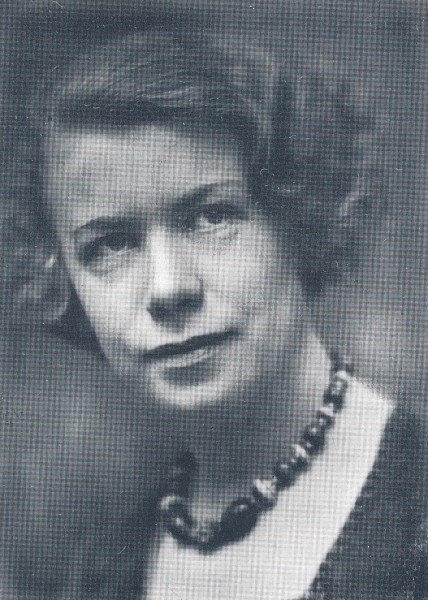Edith Øberg
Edith (Justine) Øberg (1895-1968) was born in Sweden by Swedish parents, but as the family moved to Norway, she grew up in the Rodeløkka area in Kristiania (Oslo). 20 years old she made her debut as a singer, but soon after, writing became her priority. The next year, in 1916, her first book was published. This novel, named Pr. Correspondence, contains the following passage: “Ms. Lindeman tells me that as a young girl she had a friend she loved passionately. But she died. It seems like she never conquered that sorrow. I guess you know that she totally avoids men.”
Close friendships between women is the central theme in many of Edith Øberg’s novels; how these friendships develop, and problems that arise when other men or women enter the scene and interrupt the relationship. Øberg writes masterly about lesbians without doing so directly. The characters hide behind an impulsive mind and hotheaded “young girl romance”. The writer is often ironic, humorous, but also has a rather sarcastic undertone on behalf of her own sex.
The main character in The Novel (1918) is 20-year old Botn Virik, a highly ambitious woman who loathes men and plan never to marry. She is dedicated to becoming a writer, and to create novels that will astonish the world. Whether that is womanly or not, she does not give a damn. “I am not a woman. That is the point. I do not want to be a woman!”
Intimate friendships between women is also the theme for the following novels by Øberg, like the critically acclaimed Man in the Dark (1939), but it is not until Initiation (1940) and The White Poplar (1945) that she really flourish as an artist. In these two books, Øberg describes a thrilling and intricate love/hate relation between the surgeon Anne-Marie and Tove, a woman interested in fine arts.
Actually, she should have been a boy, Anne-Marie admits. She lives like a man, has a “manly home” without any garnish (like herself), and she prefers female company. She is certain that neither Tove nor herself will ever get married. Anne-Marie’s masculine sides are emphasized when she “looks at Tove with almost the same expression as a man loving a woman”. At times, Anne-Marie can be perceived as non-gender. About an actress it is said: “She is not a lesbian. Consequently, neuter”. Tove is described more carefully, but finally it becomes clear that she has always felt strongly attached to Anne-Marie. Besides, she gives her friend a collection of poems by Sapfo, “the lesbian nightingale”. Oscar Wilde’s portrait of Dorian Gray also appears in a dream.
These two last novels made the critics take use of superlatives, describing the language as well as style and structure. Johan Borgen focused on the contrast between the two friends, which he understood as “two sides of one split mind”. Later, Ebba Haslund wrote: “The two of them are inseparably tied together, like the two sides of Øberg’s own nature.”
Odd Eiden expressed the opinion that Edith Øberg had far too few readers, but argued that she was far too intelligent and, therefore, not feminine enough. The characters of her books were modern feminists, with a - in his view - masculine ability to reflect and think. In addition, they displayed a humourous kind of male loathing.
Aksel Ødem named Øberg the most important female writer in Norway after Sigrid Undset. Everything she did, he argued, was well thought through and well written. Better than any other Norwegian writer she knew how to shape a destiny.
Edith Øberg also published four popular books under the pseudonym Lita - sassy entertainment novels that, according to newspaper reviews, were not suitable as gifts for young people. In 1938, Øberg married the Norwegian writer and critic Hans Christian Lyche (1885-1958).
*Translated from Norwegian by Heidi Rohde Rafto
References
Øberg, Edith. 1916. Pr. Korrespondanse. Kristiania: Aschehoug.
Øberg, Edith. 1918. Romanen. Kristiania: Aschehoug.
Øberg, Edith. 1939. Mann i mørke. Oslo: Aschehoug. New ed. 1991 with and afterword by Janneken Øverland.
Øberg, Edith. 1940. Innvielse. Oslo: Aschehoug.
Øberg, Edith. 1945. Den hvite poppelen. Oslo: Aschehoug.
There are seven master's theses about Edith Øbergs writing, these and a complete bibliography can be found in Norsk Biografisk leksikon.

